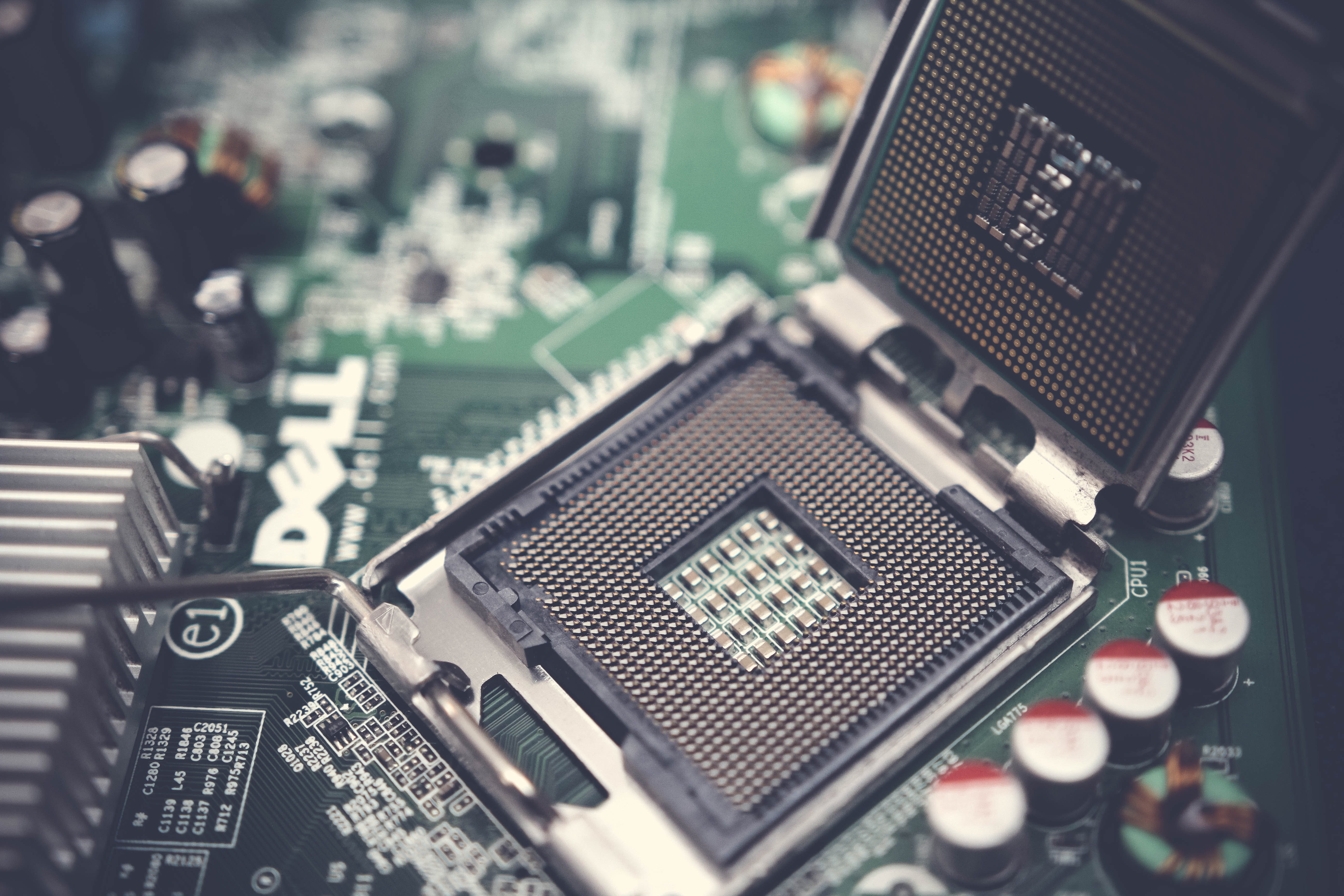TI joins the price war!
TI joins the price war, domestic analog ic are heading for blood!
Now even the analog chips can't withstand the impact of the downside cycle.
Analog chip giant Texas Instruments' revenue fell 11% in the first quarter of 2023 from a year earlier, declining in all terminal segments except the automotive sector. At the same time, some industry insiders told the semiconductor industry observation that TI intends to engage in opening a price war with local manufacturers in power management chips. It can be predicted that, starting from the power management chip, the analog chip began a new round of big fighting.
In 2022, the global semiconductor integrated circuit industry, affected by economic weakness, inflationary pressure, energy price fluctuations, decline in consumer confidence and other factors, experienced the reversal process from the beginning of the year to the decline in orders and destocking, the industry entered the adjustment period, and the impact has continued to the first half of 2023. With the domestic and foreign analog chip manufacturers in the first quarter of the financial report gradually disclosed, the analog chip field cold hit.

![]()
01 Automobile and industry can not stand up, the giant ushered in the cold wind
Weak demand for consumer electronics is the industry consensus, but automotive and industrial applications are an important driver of semiconductor demand growth. But now it seems that cars and industry are starting to decline, too.
Analog chip giant Texas Instruments is also feeling the wind, with about 77 percent of Texas's sales in 2022, with another 23 percent coming from embedded processing. However, the current macroeconomic factors coupled with increased competition have brought adverse factors to TI. In terms of terminal applications, in 2022, industry will account for 40%, consumption 28%, automobile 25% and communication 7%.
TI revenue for 2023 was $4.38 billion, down 11% from the same period last year; net revenue was $1.71 billion, in line with analysts' forecasts of $4.36 billion. Sales of analog chips fell 14%, embedded processors grew 6.4%, and other revenue fell 16%. Automotive are the growth driver for Texas Instruments 2023 * quarter *. TI said all end markets except cars were weak as expected.
TI expects demand to remain weak, and TI said customers are clearing inventories and cutting orders, and inventories will increase this quarter. TI had also cut distribution agents in order to better control inventory. Second-quarter revenue is expected to be $4.17 billion to $4.53 billion, while analysts had expected revenue of $4.82 billion, the midpoint of the range down 16.5% from a year earlier.
But the car market seems to be not as strong as expected. In 2023, the mainland auto market has seen a reversal, with auto sales falling below expectations, especially for fuel vehicles, and the car market has been reduced seriously. Although in February and March, many well-known car companies have sharply reduced prices to stimulate sales, but the results did not improve significantly. According to the mainland passenger association, retail sales rose only 0.3% in March, down more than 13% in the first quarter from the same period last year, while wholesale sales also declined 7.3%.

Not only is China's car market demand weak, the US consumption power is also low, the car market is also spread to the upstream chip end. According to a recent report by Morgan Stanley, automakers are cutting orders while asking chipmakers to pay for a price war and chip suppliers to cut prices. Geely cut power management IC, power semiconductor and MCU to a certain extent. According to Ditimens, some Taiwanese IC design companies and chip suppliers from Japan and the United States may cut orders for vehicle semiconductor parts by 10 percent to 20 percent in the second quarter.
According to the National Business Daily, companies said that chip manufacturers are also starting to cut prices, and many manufacturers began to consider the possible conversion of the production line to produce industrial chips used in cars. As consumer electronics chips collapsed last year, many chip makers shifted their production capacity to automotive chips.
The wafer manufacturer TSMC, which saw revenue fall nearly 5% in 2023 *, cited uncertainty about automotive chips. TSMC CEO CC Wei reported that demand for its vehicles is currently stable, but shows signs of slowing by the second half of 2023.
02 Consumer electronics was weak, and local manufacturers' net profit fell sharply
In recent years, a number of analog chip companies have emerged in China, such as Shengbang Micro, Serpu, Ai Electronics, Core Micro, Jingfeng Mingyuan, Xinhai Technology, Lixin Micro, Xiaopeng Micro, Xidiwei, etc. Most of them start from the consumer electronics market. Therefore, in this wave of cold current, feel the most, especially closely related to mobile consumer applications and account for more than 60% of the revenue of the most affected.
Sunbang Micro is an important player in the field of analog chips in China. At present, the company has more than 4,300 products available in 30 categories, covering signal chain and power management. The revenue of Shengbang Micro in the first quarter of 2023 was 510 million yuan, down 33.80% year-on-year. Profits fell 88.40 percent year on year to 30.206 million yuan. Net profit attributable to shareholders of the listed company excluding non-recurring gains and losses fell by a staggering 97.49%.
Nin is a rare analog chip maker with revenue growth in the first quarter, which is inseparable from its market strategy focusing on high-barrier areas such as automotive and pan-energy. The company mainly focuses on sensors, signal chains and power management, with more than 1,400 product models, which are used in automotive, pan-energy (photovoltaic, industrial automation, digital power supply) and consumer electronics. According to the financial report, the automotive sector accounted for 23.13% of the total revenue in 2022, pan-energy accounted for 69.69%, and consumer electronics has fallen to 7.18%. In addition, the delivery scale of the Core Micro in the automotive field has exceeded 100 million, and the vehicle specification level chips have been batch loaded in a large number of mainstream vehicle manufacturers / automotive primary suppliers. In addition, it has started to move to Fablite mode. Its subsidiary Naxi Micro is mainly engaged in packaging and testing business. It has started formal trial production in the fourth quarter of 2022, mainly to meet the company's own pressure sensors and small batch customized products.
In 2022, it expanded its magnetic sensors, non-isolated drives, and new power management products (such as MOSFET, IGBT and GaN), which were known as its growth engine in the first quarter of this year. In 2023, its revenue in the first quarter was 471 million yuan.attributable to shareholders of listed companies excluding non-recurring profit and loss of negative 22.5 million yuan, fell 126.84%, the main reason is that 2022 annual restricted stock incentive plans to pay expenses increased, if excluding the influence of share payment expenses, this attributable to shareholders of listed companies net profit of 100 million yuan, up 15.98% from a year earlier.
A total of 1,000 product models, involving 42 categories of high-performance digital-analog hybrid signal, power management and signal chain. The revenue in the first quarter of 2023 was 380 million yuan, down 35.41% year-on-year. Profit is more plunged, attributable to the shareholders of the listed company net profit after deducting non-recurring gains and losses fell 354%. The sharp profit drop was caused by the decline in the company's operating income, the company increased the investment in diversified research and development projects to expand the market application field, and the corresponding personnel compensation and other expenses increased compared with the same period last year. Aiwei Electronics is also gradually infiltrating from consumer electronics to AIoT, industrial, automotive and other market fields, and related products have made continuous breakthroughs in the automotive field, successfully introducing BYD, Hyundai, Geely, Chery, Zero Run, Changan and other brand customers.

In the first quarter of 2023, Jingfeng Mingyuan achieved sales revenue of 265 million yuan, down 12.18% compared with the same period of last year; the net profit attributable to shareholders of listed companies excluding non-recurring gains and losses was-77 million yuan, down 112.34% compared with the same period of last year. According to its financial report, the average unit price in the first quarter decreased by 33.23% compared with the first quarter of 2022. Although the unit price of products decreased compared with the same period of last year, it increased compared with the fourth quarter of 2022 and basically returned to the historical conventional price. At the same time, the company's shipments increased by 31.52% compared with the same period of last year. However, the gross profit of consumer analog chips itself is very low, and if the unit price drops again, the gross profit margin will be even lower. It is reported that the gross profit margin in the first quarter is 23.20%, down 6.57% compared with the same period last year.
Xinpengwei mainly develops power semiconductors, including three categories of product lines: household appliances, standard power supply and industrial control power category, including PMIC, AC-DC, DC-DC, Gate Driver and supporting power devices. At present, there are more than 1,500 effective product models. Its products are widely used in household appliances, mobile phone and flat tablet charger, set-top box adapter, on-board charger, smart electricity meters, industrial control equipment and many other fields. In 2023, the quarterly revenue was 187 million yuan, up 1.03% year on year. The net profit attributable to the shareholders excluding non-recurring gains and losses of the listed company was 11.28 million yuan, down 62.19% year on year. According to the financial report, the main reason for the decline in profits is that the company continued to increase investment in research and development of industrial and automotive products, and the increase in research and development expenses led to reduced profits. The R & D investment in the first quarter increased by 36%, and the company is actively expanding its high-quality R & D team. With the increase of staff and average salary, the corresponding staff salary increased significantly compared with the same period last year. In the future, Xinpeng Micro will upgrade the technology platform along the product route of "consumer-industrial-car level" and continue to enrich the product line.
03 is written at the end
To sum up, it can be seen that domestic analog chip manufacturers almost all felt the decline in performance in the * quarter of 2023, which is also a major situation faced by the whole global industry. Automotive, industrial, communications, consumer and other related applications are huge driving forces for the growth of the analog chip market, but relatively speaking, the growth of consumer demand is limited.A number of domestic analog chip manufacturers have been gradually developing industrial and automotive products, in the author has made some interpretation.
Although the domestic analog chip manufacturers in the profit decline, but part of the reason is caused by research and development investment, a temporary profit decline for domestic analog chip manufacturers, is not a bad thing. We should also give domestic manufacturers more time to build up strength to enter a bigger market.
With the industrial and automobile market gradually opening to domestic chips, and most analog chip manufacturers begin to move forward to advanced products, the domestic penetration rate of industrial and vehicle grade chips is on the rise. In the future, it may also bring a sense of urgency to international manufacturers like TI in more areas.
However, we must also admit that as TI's 12-inch fabs start opening, they have more confidence to arm wrestle with domestic manufacturers on price, as was mentioned in the previous article on the semiconductor industry.
Thus, under the current destocking pressure, the local analog chip competition can be foreseen fierce. How to avoid being eliminated in which, is also the local manufacturers need to think about the top priority.